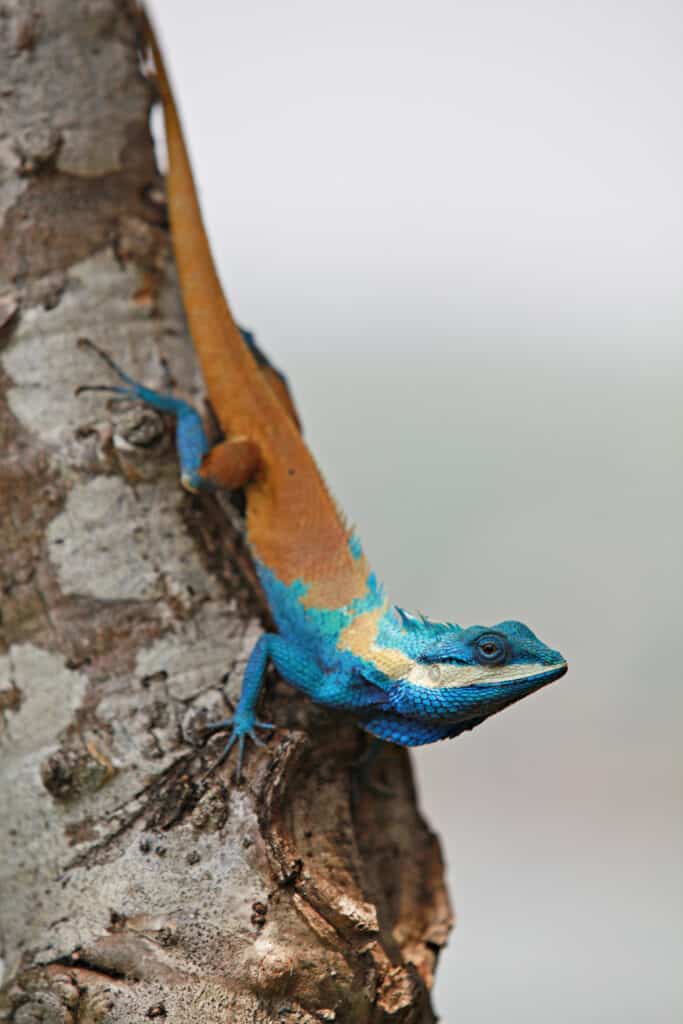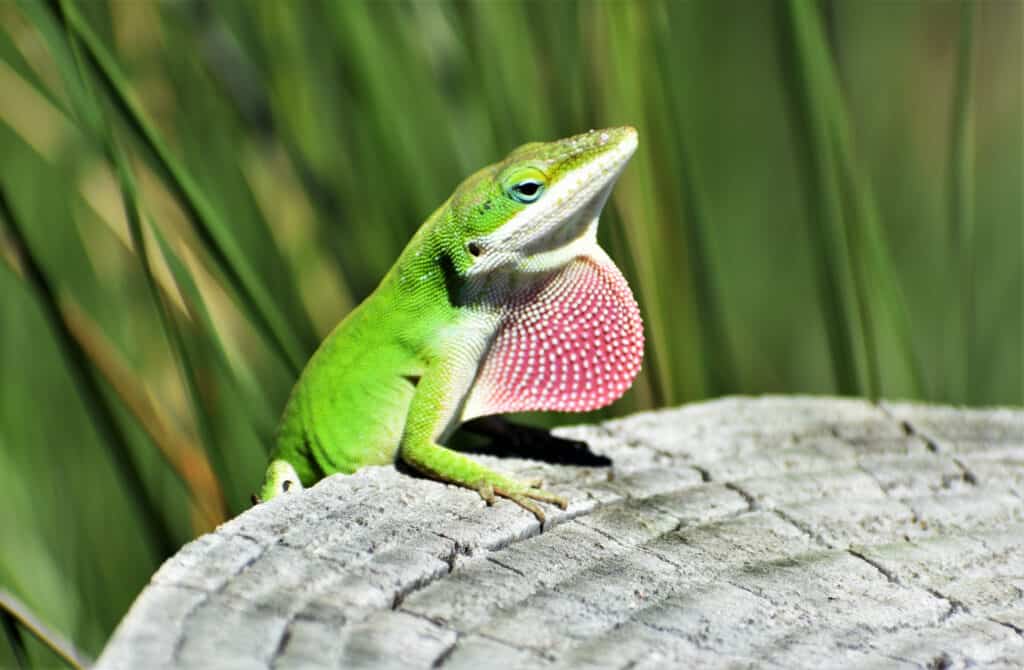Spending enough time around lizards and observing them can reveal a lot about them. Like how social they are and their complex communication techniques. These techniques include how they communicate with other lizards and with humans.
People with pet lizards must have noticed their pets perform pushups. This behavior creates curiosity about why lizards engage in this seemingly random act. This article discusses the social cues that the act connotes and when it becomes unusual.
Why do lizards do pushups?
Lizards are social creatures that have self-awareness. This characteristic contributes to the main reason why they do pushups. Lizards do pushups as a show of fitness and readiness for whatever comes their way. This is in a situation where the lizard senses a threat or needs to assert dominance in its territory.
This act is also a means to attract the attention of potential mates. Lizards do pushups to show potential mates their best features, like beautiful color patterns. This act is also called ‘head bobbing.’ The reasons for performing this action can be beyond those stated above.

Lizards sometimes engage in “pushups” or “head-bobbing” to display their attractive characteristics, like their beautiful plumage.
©Mercedess/Shutterstock.com
Workout pattern
Pushups are a form of workout for lizards that they need to survive. As cold-blooded creatures, they need to stay warm, and this workout helps achieve this. Research shows that lizards of the same species perform the same workout routine. They also do it in the same time frame, which means each species has its unique workout pattern.
Other reasons why lizards do pushups
Pushups for lizards is an act that belongs in the same category as head bobbing but requires more energy. Lizards use both actions to communicate and for other reasons. Some other reasons why they do this include;
Attention seeking
Lizards do pushups and bob their heads to get the attention of humans. This action is more relevant to pet lizards and lizards in captivity.
They do this when humans are around to get their attention. You will notice this when you get the attention of your pet lizard. They tend to try to get yours in return. They do this by giving a show of head bobbing. The attention they seek can be for different reasons. The reason is there is no particular head bobbing act for specific needs.
Lizards such as the Blue-bellied fence and Male green anoles lizards will use pushups to show their vibrant colors. They do this to attract and impress potential mates.

Lizards like the Green Anole do “pushups” to attract mates.
©victoria.schell/Shutterstock.com
Hierarchy
Lizards often bob their heads to show off their strength. This phenomenon is common in lizards that live in the same environment or terrarium. Usually, there will be the dominant one, like the alpha. The dominant lizard will often bob its head at the other lizards in such a setting.
This act reinforces the social hierarchy in the terrarium. Where one owner has many pet lizards, this can happen between them. This act doesn’t mean a violent gesture from a dominant lizard.
Warning to predators
Lizards perform pushups when they are in a threatened position or are facing a predator. The message to the predator when doing pushups is that the lizard is aware of the predator’s presence. It also shows the predator that the lizard is ready to fight back.
When lizards do pushups, it makes them seem larger and sturdy, giving the predator a reason to rethink. Lizards like the Frilled lizard show off their neck frills as a defense mechanism. This is a form of defense mechanism lizards use. Other forms of defense mechanism they can use include showing off their dewlap.
Stress
Lizards also go through stress because of different factors. This phenomenon is common with pet lizards. It happens more when the owner doesn’t know enough about caring for a pet lizard.
It is essential to research the requirements for nurturing a pet lizard before getting one. A proper lizard tank should have enough light. Adequate humidity should be present. Where these factors aren’t present, lizards get stressed. This process will help determine why your lizard might bob its head and address its needs.
Mode of communication
Lizards bob their heads to communicate with other lizards the same way birds tweet. Lizards living in the same environment do this very often. This is why lizard pet owners often put many lizards in the same terrarium.
This will encourage socialization between the lizards as lizards are very social creatures. It is normal to see lizards meet in an environment and start bobbing their heads at each other. The message passed through the act might be unclear to humans. It is clear to see that these lizards understand themselves.
Exercising dominance
Dominant lizards also use head bobs to show dominance to trespassers. When a lizard ventures into the territory of another lizard, the prevalent lizard in the environment will bob its head at the intruder.
This showoff usually happens when two lizards encounter each other, and there is a sense of conflict. Both lizards start bobbing their heads aggressively at each other to show that a fight is about to begin. This action happens in both male and female lizards.
It helps to regulate body temperature
Lizards can’t regulate their body temperature because they’re cold-blooded creatures. This feature contributes to why lizards do pushups. When it’s cold outside, it is common for lizards to do pushups throughout the day. This exercise helps to keep their heart rate steady.
Doing pushups help lizards contract and flex their muscles. This exercise keeps them fit and prevents cramps when they search for food. It also helps to prevent blood clots in lizards which can lead to a heart attack.
When head bobbing becomes unusual
Lizards usually have a reason for bobbing their heads. It becomes an issue where your pet lizard keeps nodding its head, and you can’t find a reason for it after observing the environment or the terrarium.
There are different reasons for this, including stress, hunger, and temperature. This point is when you should consider the setting your lizard lives. Consider if there is enough light, room for the lizard to curl up, or if there’s clean water. Other factors that can lead to the unusual bobbing of the head include;

Lizards need plenty of UVB light.
©underworld/Shutterstock.com
Nutrients deficiency
Lizards need vitamin D3 to survive. They get this nutrient from UVB light. This is why proper lighting is a requirement for your pet lizard. Calcium is another nutrient that lizards require.
Thus, you should pay attention and ensure your pet lizard gets all the nutrients it needs. This might be the reason it won’t stop bobbing its head. Also, ensure that the temperature around the lizard is suitable for a cold-blooded creature.
Variety in diet
It is common for pet owners to settle for feeding their pets the same thing every day. This practice is terrible as these pets need variety in their diets to maintain a happy mood and stay healthy. Feeding your pet lizard the same thing can cause nutritional deficiency.
Other forms of lizard behavior
Pushups and head bobbing are the most common behaviors to notice in lizards. There are other behaviors that they exhibit that are interesting. Some of them include;
Changing skin color
Some lizards have chromatophores. This feature means they contain pigment cells that reflect light. This characteristic allows them to change their body color in response to their environment. When their skin goes black and white, it indicates that they’re overheating.
This shows it’s time to switch off the heat lamp for a bit and cool them down. They may also become black to draw more warmth if they are chilly. Bearded dragons, for example, may flatten their body like a pancake. This helps them expose as much of their skin as possible to light and warmth.
Fluffing
Fluffing occurs when reptiles with beards reveal them by flaring them out. An example of lizards with beards includes the Bearded Dragon. Fluffing lizards without provocation is rare. This action is a protective response to a perceived threat. They do this to appear larger and more frightening.
Open mouth
Lizards open their jaws to control their body temperature. This action enables heat to leave and prevents overheating. They can’t sweat as we can, so they have to find other ways to regulate their body temperature.
Tail curling
When a lizard coils its tail like a scorpion, it usually indicates that it is vigilant and dominating. Lizards do this when they’re preparing to pounce on prey. Many lizards may wriggle or shake their tails shortly before launching themselves into action. They do this when searching for insects or other tiny creatures to eat.
Basking
Basking is another way lizards stay warm. This act involves stretching out and exposing their skin to the sun and heat. Recall that they are cold-blooded creatures meaning they need a way to regulate their body temperature.
Conclusion
When your pet lizard does pushups, there is another lizard around. It could be a female lizard receiving the mating call, or a male, receiving the warning or greeting. Knowing the difference between pushups and head bobbing in your pet lizard is essential. Understanding the difference will help to understand what your lizards needs.
The photo featured at the top of this post is © Maarten Zeehandelaar/Shutterstock.com
Thank you for reading! Have some feedback for us? Contact the AZ Animals editorial team.






